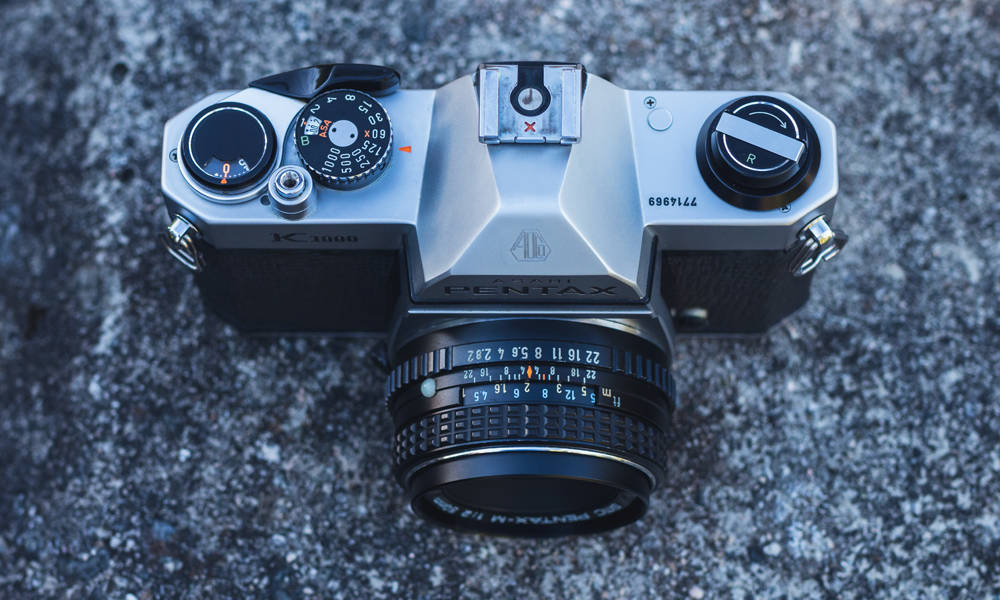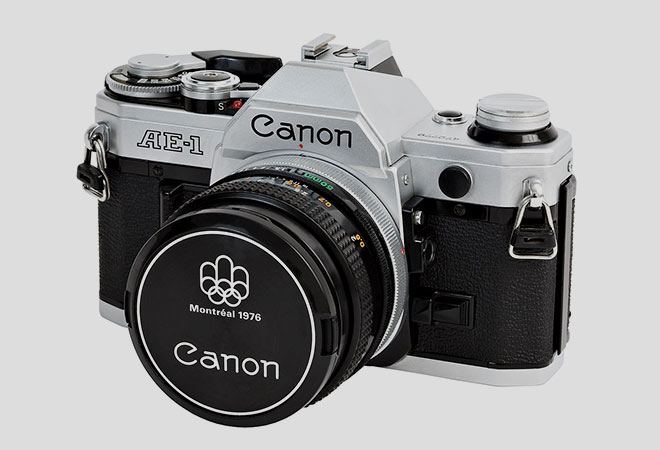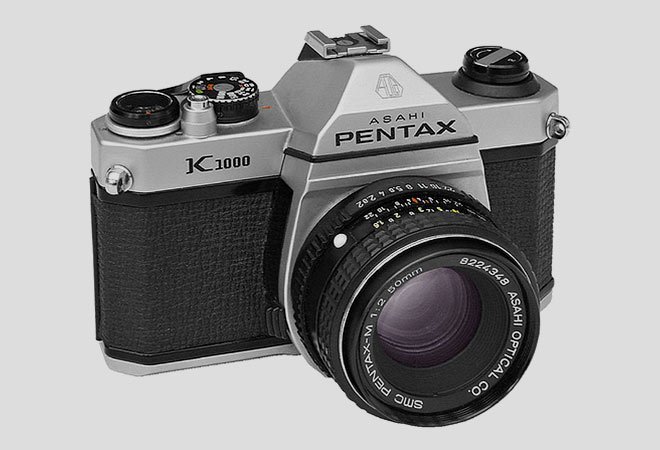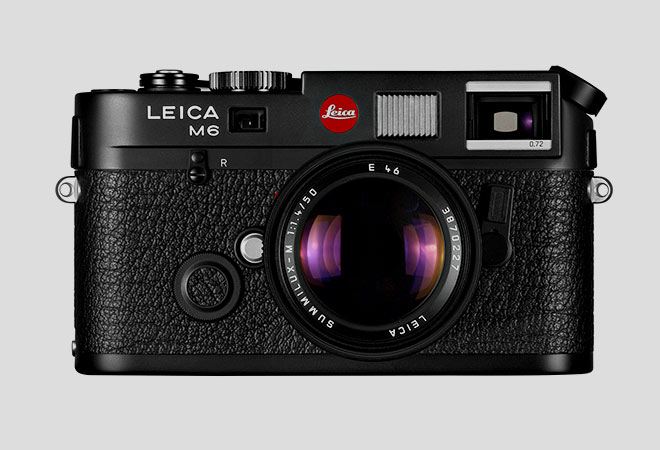
News Flash: Film is making a comeback, and in a very big way. You watched it happen with vinyl, and now you’re slowly watching it happen with film. But is it really that shocking? Just as people learned that analog sounds better with music, it also often looks better with photography.
Your interest is piqued and you want to see what all the fuss is about, but you have no clue what you’re doing. You don’t know an SLR from a rangefinder, or 35mm from medium format.
Worry not, friend, here are 7 of the best film cameras of all time.
Best Film Cameras for Beginners

Canon AE-1
One of the most well-known and widely circulated 35mm SLR cameras ever made, the Canon AE-1 has one of the most important seats at the table. Manufactured from 1976 to 1984, this camera helped bridge the gap between hardcore photo professionals and hobbyists. These rigs are sturdy and reliable, and won’t cost you an arm and a leg to get your hands on. Plus, Canon’s FD lenses are incredible and famous in their own right, and can generally be had on the cheap. Its younger brother, the Canon AE-1 Program, whose notable advancements include a fully automatic mode and shutter priority, is also a great option for people looking to get into analog photography.

Pentax K1000
The Pentax K1000 is often referred to as a photography tank, and for good reason. The camera’s all-metal body gives it some healthy weight, and the simplicity of its functions—fully manual settings, no fancy extras or unnecessary buttons or levers—make it a dream to work with, so long as you know what you’re doing. If you don’t, this probably isn’t going to be your huckleberry. They’re relatively cheap to come by, and like the Canon’s, you can find lenses for them everywhere!

Leica M6
Leicas are the crème de la crème of the photography world, and have been since Ernst Leitz first released the Leica 1 over 100 years ago. That moniker still rings true today, with their incredible digital Monochrom and legendary M-P series cameras. The M6, however, is special. And when it comes to film, it is one of the most highly sought cameras of all time. The M6 came in two distinctive models, the M6 and the M6 TTL. They both come with TTL metering, which makes them a breeze to pick up and use, even for photography novices. Though the M6 is probably the spendiest rig on this list, we’d happily argue that it’s worth every penny. These old Leicas are bulletproof, and there’s a reason why 30-year-old used ones still regularly sell for over a g-note on eBay or your local Craigslist.

Olympus OM-1
Looking for incredible quality and compactness, but not exactly ready to hop into Leica Land just yet? The OM-1’s are oft considered the poor man’s Leica because of their incredible quality and lightweight, compact bodies. In fact, they were first named the M-1, but because Leica’s signature camera series was also called the M series, Olympus was forced to change the M-1 to OM-1. Another inexpensive pick up, these cameras are almost literally dime-a-dozen rigs, with plenty of Olympus’ quality OM glass running around for extremely cheap. If you’re on a budget, this is the camera you should be looking for.

Canonet G III QL17
This camera isn’t some kind of photography powerhouse. It can’t use a million lenses (in fact, it has a fixed lens). It won’t be the only horse in your photographic stable. But it is the best-selling rangefinder camera with a built-in light meter of all time–and it didn’t get there by sheer luck. From 1972 to 1982, Canon sold over 1.2 million of these little guys. The Canonet QL17’s come with incredibly sharp f/1.7 40mm lenses, and are frequently likened to their much more expensive Leica counterparts. In fact, when it was first released in 1972, it was marketed as a direct competitor to the more extravagant and far more spendy Leicas—an angle that worked well. The Canonets are incredibly good everyday carry shooters because they’re lightweight, super compact, solidly built with all metal shells, and really just look cool and take great photos. If you’re looking to delve into the world of street photography, a Canonet is probably going to be your best friend. Quick note: The Canonet QL17’s come with built-in light meters, but they’re never accurate. So either download a light meter app for your smartphone, get an external one, or start reading up on the Sunny 16 Rule, ’cause you’re gonna need it.

Minolta X-700
To put together a “best film cameras” list and not include at least one Minolta rig is almost criminal. That said, the X-700 was Minolta’s best consumer market manual focus camera ever. Period. The X-700 has one of the best and brightest viewfinders in the business, which makes it great to shoot with. It also includes fully automatic and manual modes, which means everyone from complete novices to expert photogs will appreciate it. The only drawback of this camera is its lens selection. If you’re just getting started in photography and don’t already have Minolta’s MD or MC mount lenses, then you’d be better off picking up one of the other cameras on this list. But if you do have those lenses or can come into some of them for cheap, you’ll have yourself a very solid, very reliable shooter.

Nikon FM2
The final seat at the table fittingly belongs to the Nikon FM2. The FM2 is one of the biggest top-seat contenders on this list, if for no other reason than it is an absolute workhorse. Its incredible shutter speed versatility (as fast as 1/4000th of a second!), accurate metering, and mechanical shutter (which means it doesn’t need a battery for anything other than its light meter) mean that it is basically the ideal camera. The Nikon FM2 will take any of Nikon’s massive selection of F-mount lenses made after 1977 (AF-S Nikkor, AF Nikkor D, AF Nikkor, Nikkor AI-S, Nikkor AI, Nikon Series E, etc.), which means the possibilities are damn near endless. The FM2 couldn’t be a more straightforward, clean-cut camera, and lacks a lot of the fat added on by other camera brands in the 1980’s in order to appeal to the masses. It was used by photojournalists and professional photogs all over the world because of its reliability and no-nonsense ease of use, and if that’s not a stamp of approval, we don’t know what is.
Credit for the Article : coolmaterial.com


Leave a Reply